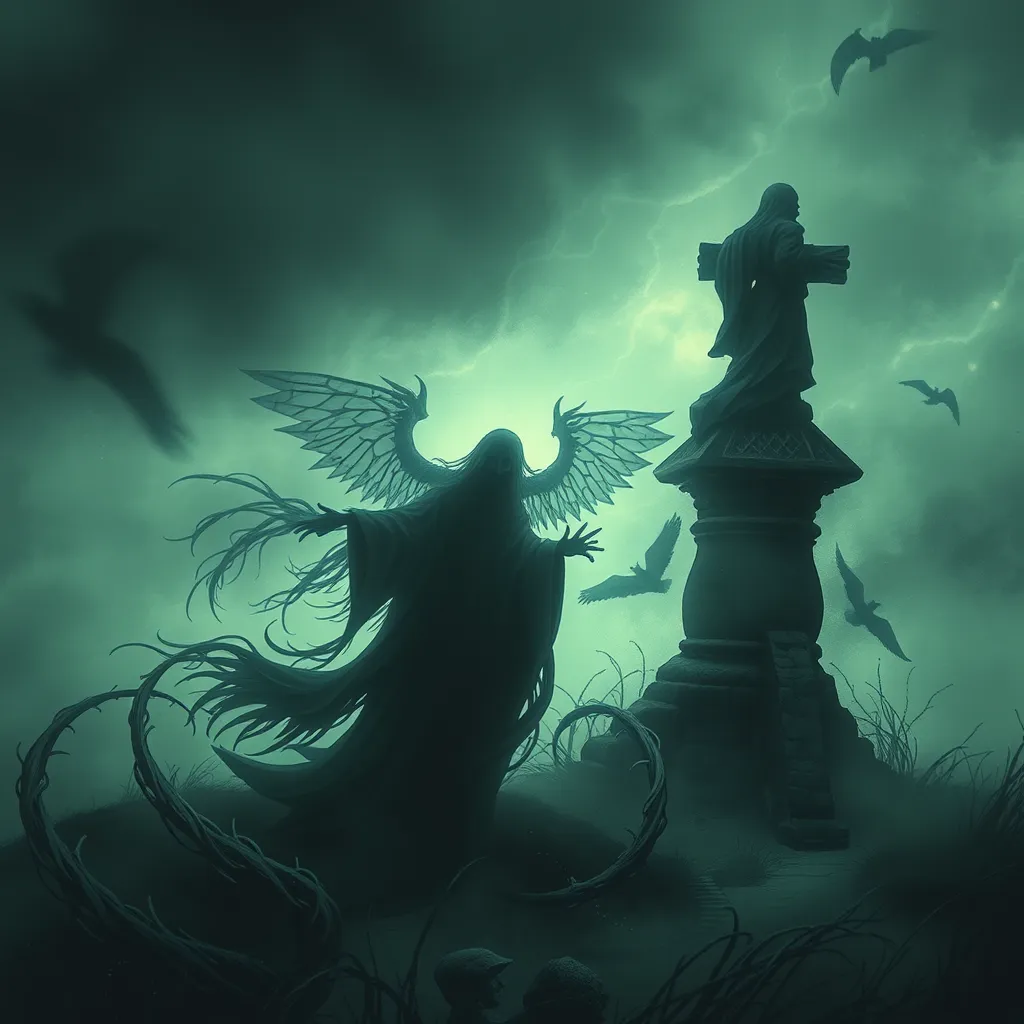The Simurgh in the World of Storytelling: A Global Perspective on its Symbolism
I. Introduction
The Simurgh is a mythical bird from Persian mythology, often depicted as a large, benevolent creature with the head of a dog, the body of a peacock, and the wings of an eagle. This majestic being is not just a creature of beauty but is laden with profound symbolism and meaning that transcends cultures and eras.
In various cultures, the Simurgh has been revered as a symbol of wisdom, knowledge, and the interconnectedness of all life. Its importance can be traced back to ancient times, where it has played a significant role in literature, art, and spiritual traditions.
This article aims to explore the rich symbolism of the Simurgh across different storytelling traditions globally, shedding light on its historical origins and its legacy in modern literature and media.
II. Historical Origins of the Simurgh
The roots of the Simurgh are deeply embedded in ancient Persian literature and mythology. Its earliest references can be found in the texts of Zoroastrianism and later in epic poetry.
In the renowned Persian epic, the Shahnameh (The Book of Kings), the Simurgh plays a pivotal role in the story of the hero Zal, who is born with white hair and is abandoned by his father. The Simurgh raises Zal, teaching him wisdom and knowledge, illustrating the bird’s role as a nurturing and guiding force.
When comparing the Simurgh with other mythological creatures in early texts, one can see parallels with figures such as the Griffin in Greco-Roman mythology or the Roc in Arabian tales. These creatures often embody similar traits of strength, wisdom, and guardianship.
III. Symbolism of the Simurgh
The symbolism of the Simurgh can be divided into several key themes:
- Representation of wisdom and knowledge: The Simurgh is often seen as a guardian of knowledge, imparting wisdom to those who seek it.
- Themes of transformation and rebirth: The Simurgh embodies the cycle of life, death, and rebirth, reflecting the transformative nature of existence.
- The Simurgh as a symbol of unity and connection: In many narratives, the Simurgh represents the interconnectedness of all beings, emphasizing the importance of harmony in the universe.
IV. The Simurgh in Persian Culture
In Persian culture, the Simurgh holds a revered place in poetry and art. Poets such as Ferdowsi and Attar have immortalized the Simurgh in their works, using it as a metaphor for divine love and spiritual enlightenment.
In contemporary Iranian storytelling, the Simurgh continues to influence narratives, symbolizing hope and resilience in the face of adversity. It serves as a reminder of the rich cultural heritage of Iran and the enduring nature of its myths.
Moreover, the Simurgh has become a national symbol, representing not just the beauty of Iran’s folklore but also the aspirations of its people for unity and peace.
V. Comparisons with Global Mythological Creatures
The Simurgh shares similarities with various mythological creatures across the globe:
- The Phoenix in Western mythology: Like the Simurgh, the Phoenix represents rebirth and immortality, rising from its ashes to start anew.
- The Garuda in Hinduism and Buddhism: This bird-like creature symbolizes strength and power, often serving as a mount for deities, much like the Simurgh’s role as a protector.
While these creatures share common themes of wisdom, rebirth, and guardianship, their cultural contexts and narratives differ significantly, showcasing the diverse ways in which humanity interprets and personifies the natural world.
VI. The Simurgh in Modern Literature and Media
In modern literature and media, the Simurgh continues to inspire authors and filmmakers. Its depictions have evolved, but the core themes of wisdom and transformation remain prevalent.
Contemporary novels often draw on the Simurgh’s rich symbolism to explore themes of identity, spirituality, and the human experience. For instance, in some fantasy literature, the Simurgh is portrayed as a wise mentor guiding protagonists on their journeys.
Furthermore, adaptations in various cultural contexts have seen the Simurgh reinterpreted in films and graphic novels, emphasizing its universal appeal and the relevance of its messages in today’s world.
VII. The Legacy of the Simurgh in Global Storytelling
The legacy of the Simurgh inspires modern writers and artists, encouraging them to delve into themes of wisdom, unity, and transformation in their works. Its ability to resonate across cultures highlights the significance of mythological figures in shaping narratives and moral lessons.
Today, the symbolism of the Simurgh remains relevant, encouraging dialogue about cultural exchange and understanding. As we explore its stories, we recognize the value of these ancient symbols in fostering connections among diverse communities.
VIII. Conclusion
In summary, the Simurgh stands as a powerful symbol in the world of storytelling, representing wisdom, transformation, and the interconnectedness of life. Its significance transcends borders, inspiring countless tales and artistic expressions throughout history.
As we reflect on the importance of cultural symbols like the Simurgh, we are reminded of the rich tapestry of human experience and the stories that unite us all. Exploring mythological figures in global literature not only enriches our understanding of different cultures but also highlights the universal themes that resonate within each narrative.




